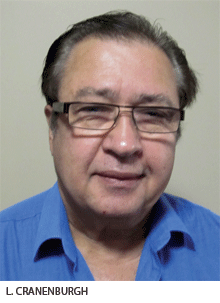Dark side of sunny Oz
 A report in the Canberra Times late last year (December 5) disclosed that India has overtaken China and Britain to become the largest supplier nation to Australia’s skilled migrants programme, accounting for 15.7 percent of the total. According to Kate Lundy, federal minister for multicultural affairs and sport, India contributed 29,018 skilled migrants to Oz in the last financial year. Of them, 20 percent are reportedly primary and secondary school teachers. But one of golden Australia’s well-kept secrets is that the rosy dreams of a substantial number of school teachers fresh off airplanes from India, are quickly transforming into nightmares.
A report in the Canberra Times late last year (December 5) disclosed that India has overtaken China and Britain to become the largest supplier nation to Australia’s skilled migrants programme, accounting for 15.7 percent of the total. According to Kate Lundy, federal minister for multicultural affairs and sport, India contributed 29,018 skilled migrants to Oz in the last financial year. Of them, 20 percent are reportedly primary and secondary school teachers. But one of golden Australia’s well-kept secrets is that the rosy dreams of a substantial number of school teachers fresh off airplanes from India, are quickly transforming into nightmares.
As an India-born former academic of Mysore University and head teacher of Bangalore’s Baldwin Boys High School, my company in Western Australia helps Indian teachers address some of the problems they face in obtaining employment and promotion. My objective of writing this column is to prompt star-struck teachers leaving India for Oz to thoroughly research job offers in each state before accepting teaching assignments here.
The first jolting experience that hits most teachers from Asian countries is that their qualifications are not recognised as being equivalent to Australian degrees, with teacher certification from India not valued at all. Often too late they learn that there’s no premium on their excellent qualifications and teaching experience in India, when they apply for teaching positions in primary and secondary schools Down Under. Although the exposure that Indian teachers bring to the school system in Australia from the Middle East, South Africa, Malaysia and Indonesia is rich, varied and unique, the Australian system attaches no significance to it, recognising only local work experience. This parochialism has worked even against Australians returning to Australia who find that their overseas experience is hardly valued for teaching or higher positions.
High on the list of complaints of Indian teachers in Oz is that employment requirements and criteria vary in each Australian state. Compounding the problem is that faceless bureaucrats employed by education departments dump copious paperwork upon them — intended to slow the process — and stall the vetting of qualifications needed for approval over months and often years.
The Australian Institute for Teaching and School Leadership (AITSL) assesses teachers’ qualifications by applying the blanket rule that a licence to teach will be given only when applicants have completed at least four years full-time tertiary education followed by one year of professional teaching studies with six weeks of supervised teaching practice. The majority of teachers from India are merely given provisional teaching certification. Most Indian immigrant teachers I surveyed said they could only obtain casual or temporary teaching positions with permanent jobs in Sydney, Melbourne or Perth almost impossible to get.
Of course there are vacancies for teachers in the remote rural outbacks of Australia hundreds of miles from cities. These are bleak locations that native Australians and Anglo-Saxon immigrants are unwilling to accept, and where often only a couple of teachers employed in a school are left to fend for themselves in harsh environments with little of the support that teachers receive in urban metros. Teaching vacancies vary according to subjects and in Western Australia there’s a surplus of teachers in primary-secondaries, especially in Perth.
Racist bias towards immigrant teachers is evident in slang such as ‘curry munchers’ or ‘poms’ (prisoners on her majesty’s service), often used to describe Indian and English migrants. This is the dark side of Australian society. Taunts of children over foreign accents have reportedly reduced many immigrant teachers to tears. I represented a case last year to the Western Australia education authorities of a Vietnamese art teacher whose Australian head-of-department had mimicked her speech patterns in a written report, but nothing came of it.
A survey conducted in 2011 by academics Jock Collins and Carol Reid of the University of Western Sydney and Technology concluded that half of immigrant teachers believe they are unlikely to be given the same opportunities for promotion as natives. My company has handled Indian teachers’ cases, in Western Australia and Queensland, and my research — over a 20-year study — indicates that very few Indians have been promoted to the status of principal.
For transformation to begin, it is clear that the education system in Australia must change with antiquated teacher assessment and evaluation scrapped and replaced by more sensitive criteria. Providing immigrant teachers with quality inter-cultural mentors in each state to enable them to ‘learn the ropes’, as is done in the UK and Canada, would result in a major brain gain for Australia.
Indian teachers who have successfully crossed the bridge are those who have blended into the culture of their local communities and won respect for the work they do outside the classroom in Rotary, Lions or other organisations. However, at the same time a sea change is required within the smug teachers’ community in Oz, which needs to be willing to learn from immigrant teachers rather than expect the migrant teacher to ‘know what we know’.
(Lionel Cranenburgh is CEO of Shannon Quest, a Western Australia-based career education company)
Read more about Australia:














Add comment